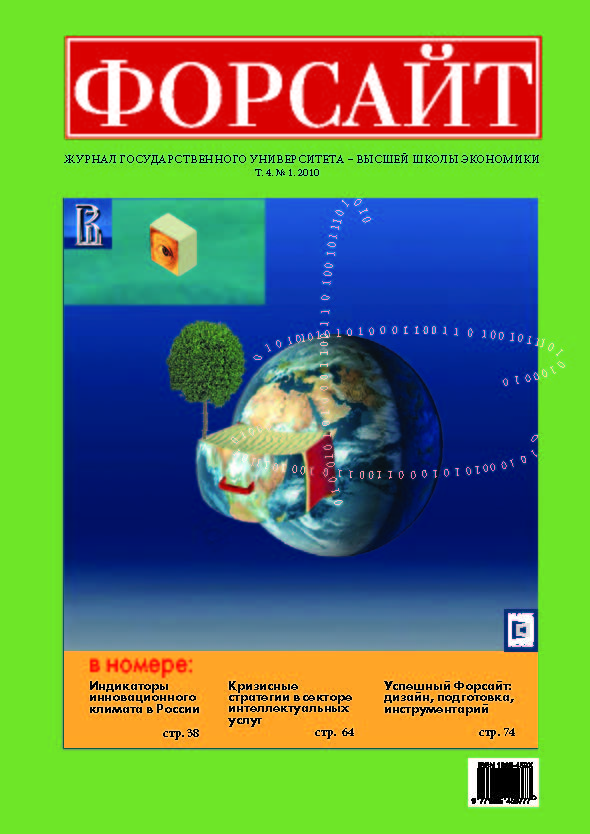Abstract
The research continues the series devoted to the study of knowledge-intensive services (KIS) in Russia. The last but not the least round of it conducted in 2009 was dedicated to the trends provoked by the global economic crisis. Sales and employment in KIS sector decreased moderately, but the strategic vision of its actors was distorted. KIS producers reduced their strategic horizon to short run, and lost distinct dominating strategy. Current strategies are distinguished by the level of product diversification. Standard (“box”) services are supplied to inexperienced users. Partially customised services form the essence of a damping strategy aimed at more experienced users. Tailored (bespoke) services are the core of innovative strategy: its target group consists of competent consumers who recognise and appreciate KIS as product innovations.
References
Balaz V. (2000) Knowledge-Intensive Business Services in Transition Economies // The Service Industries Journal. 2000. Vol. 24. № 4. P. 83-100.
Kreps D.M. (1979) A Representation Theorem for «Preference for Flexibility» // Econometrica. 1979. Vol. 47. № 3. P. 565-577.
Nehring K. (1999) Preference for Flexibility in a Savage Framework // Econometrica. 1999. Vol. 67. № 1. P. 101-119.
Roth S., Woratschek H., Pastowski S. (2006) Negotiating Prices for Customized Services // Journal of Service Research. 2006. Vol. 8. № 4. P. 316-329.
Sheehan N.T. (2005) Why Old Tools Wont Work in the New Knowledge Economy // The Journal of Business Strategy. 2005. Vol. 26. № 4. P. 53-60.
Van der Haar J., Kemp R., Omta O. (2001) Creating Value that Cannot be Copied // Industrial Marketing Management. 2001. Vol. 30. № 8. P. 627-636.
Walsh K., Enz C.A., Canina L. (2008) The Impact of Strategic Orientation on Intellectual Capital Investments in Customer Service Firms // Journal of Service Research. 2008. № 10. P. 300-317.
Дорошенко М.Е. (2007) Интеллектуальные услуги сегодня и завтра // Форсайт. 2007. № 2(2). С. 37-45.
Дорошенко М.Е., Суслов А.Б. (2008) Сектор интеллектуальных услуг: перспективы развития и сценарный анализ // Форсайт. 2008. № 2(6). С. 18-35.

This work is licensed under a Creative Commons Attribution 4.0 International License.

